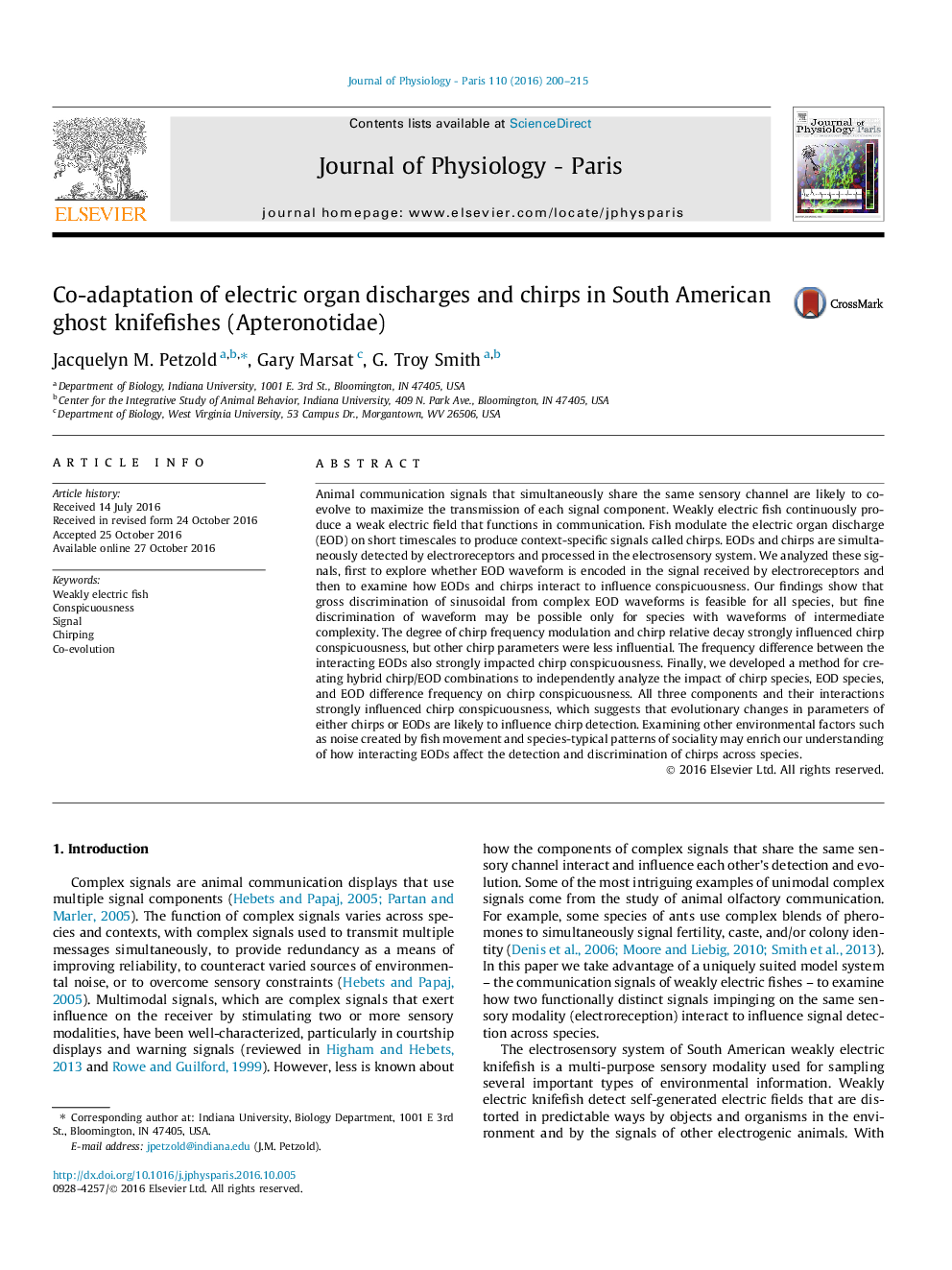| کد مقاله | کد نشریه | سال انتشار | مقاله انگلیسی | نسخه تمام متن |
|---|---|---|---|---|
| 5593266 | 1405073 | 2016 | 16 صفحه PDF | دانلود رایگان |
عنوان انگلیسی مقاله ISI
Co-adaptation of electric organ discharges and chirps in South American ghost knifefishes (Apteronotidae)
دانلود مقاله + سفارش ترجمه
دانلود مقاله ISI انگلیسی
رایگان برای ایرانیان
کلمات کلیدی
موضوعات مرتبط
علوم زیستی و بیوفناوری
بیوشیمی، ژنتیک و زیست شناسی مولکولی
فیزیولوژی
پیش نمایش صفحه اول مقاله

چکیده انگلیسی
Animal communication signals that simultaneously share the same sensory channel are likely to co-evolve to maximize the transmission of each signal component. Weakly electric fish continuously produce a weak electric field that functions in communication. Fish modulate the electric organ discharge (EOD) on short timescales to produce context-specific signals called chirps. EODs and chirps are simultaneously detected by electroreceptors and processed in the electrosensory system. We analyzed these signals, first to explore whether EOD waveform is encoded in the signal received by electroreceptors and then to examine how EODs and chirps interact to influence conspicuousness. Our findings show that gross discrimination of sinusoidal from complex EOD waveforms is feasible for all species, but fine discrimination of waveform may be possible only for species with waveforms of intermediate complexity. The degree of chirp frequency modulation and chirp relative decay strongly influenced chirp conspicuousness, but other chirp parameters were less influential. The frequency difference between the interacting EODs also strongly impacted chirp conspicuousness. Finally, we developed a method for creating hybrid chirp/EOD combinations to independently analyze the impact of chirp species, EOD species, and EOD difference frequency on chirp conspicuousness. All three components and their interactions strongly influenced chirp conspicuousness, which suggests that evolutionary changes in parameters of either chirps or EODs are likely to influence chirp detection. Examining other environmental factors such as noise created by fish movement and species-typical patterns of sociality may enrich our understanding of how interacting EODs affect the detection and discrimination of chirps across species.
ناشر
Database: Elsevier - ScienceDirect (ساینس دایرکت)
Journal: Journal of Physiology-Paris - Volume 110, Issue 3, Part B, October 2016, Pages 200-215
Journal: Journal of Physiology-Paris - Volume 110, Issue 3, Part B, October 2016, Pages 200-215
نویسندگان
Jacquelyn M. Petzold, Gary Marsat, G. Troy Smith,